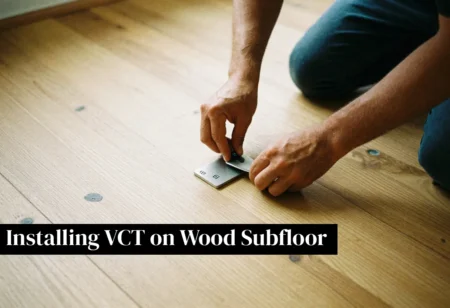If you have invested in beautiful flooring for your home, it’s essential to maintain it properly. With the right techniques and products, you can ensure that your floors stay in pristine condition for years to come. In this article, we will share expert flooring maintenance tips that will help you keep your floors looking like new.
Whether you have hardwood, tile, or carpet floors, our tips will teach you how to take care of them and prevent damage. From regular cleaning routines to preventative measures, we will cover everything you need to know to maintain the quality and appearance of your floors.
So, if you want to preserve the beauty and longevity of your floors, read on for our top flooring maintenance tips. Whether you’re a DIY enthusiast or prefer to hire professional cleaners, there’s something for everyone in this comprehensive guide.
Regular Cleaning and Sweeping
Regular cleaning and sweeping are essential practices for maintaining the appearance and longevity of your floors. Not only does regular cleaning help to remove visible dirt and debris, but it also helps prevent long-term damage caused by small particles that can wear away at the flooring material over time.
The Importance of Regular Cleaning
To make sure your floors stay nice, it’s essential to have a routine for cleaning them regularly. Consistent cleaning helps to prevent the buildup of dirt, dust, and other debris that can scratch, scuff, or damage your floors. Depending on the type of flooring you have, you may need to use specific cleaning products or techniques.
For hardwood or engineered wood floors, it’s best to use a lightly dampened mop or specific cleaning products designed for wood flooring. Avoid using excessive water or harsh cleaning chemicals, as these can cause damage to the wood’s surface.
For tile or stone floors, sweeping or vacuuming followed by a damp mop is typically sufficient. To avoid damaging the grout, use a mild cleaning solution and avoid abrasive scrubbing.
Effective Sweeping Techniques
When it comes to sweeping your floors, it’s important to use the right tools and techniques. A soft-bristled broom or microfiber mop works best for hardwood or tile floors, while a vacuum with a hard floor setting can help remove dirt and debris from hard-to-reach areas or carpeted floors.
Sweep or vacuum your floors at least once a week and consider increasing the frequency if you have pets or a highly-trafficked area. Don’t forget to pay attention to corners and baseboards where dirt and debris tend to accumulate.
Proper Stain Removal Techniques
Stains on floors are inevitable, but they don’t have to be permanent. With the right techniques, you can remove stains safely and efficiently without causing damage to your flooring. Let’s take a look at some floor maintenance tips for removing stains:
1. Act Fast
If something spills, you need to move fast. The longer the spot stays, the harder it is to get rid of. Use a clean cloth or paper towel to blot up as much of the spill as possible, starting from the outer edges and working your way inward. Avoid scrubbing the stain as it can push it deeper into the floor or cause damage.
2. Use Gentle Cleaning Solutions
For most stains, a combination of warm water and a gentle cleaning solution will suffice. Avoid using harsh chemicals or abrasive products that can damage your flooring. Mix a few drops of dish soap or vinegar with warm water and apply it to the stain with a clean cloth or soft-bristled brush. Rinse thoroughly with water and dry the area with a towel.
3. Try Specific Stain Treatments
For stubborn stains, specific treatments may be necessary. For example, hydrogen peroxide can be effective in removing blood or wine stains, while baking soda and water can help lift grease stains. However, be sure to test any cleaning solution on an inconspicuous area of your floor before using it on the stain.
4. Seek Professional Help
If you’re unsure about how to remove a particular stain or if you’re dealing with a delicate flooring material, it’s best to seek professional help. A professional cleaner can assess the situation and recommend the best course of action.
By following these floor maintenance tips and utilizing the proper stain removal techniques, you can effectively remove stains and keep your floors looking clean and new.
Preventative Measures for Floor Protection
When it comes to preserving the appearance and quality of your floors, taking preventative measures is key. By implementing a few simple tips and strategies, you can protect your floors from excessive wear, scratches, and damage, ensuring they remain in excellent condition for years to come.
Use Area Rugs and Mats
Placing area rugs and mats in high-traffic areas is an effective way to protect your floors from dirt, debris, and moisture. Not only do area rugs add a decorative touch to your home, but they also provide a barrier between the soles of your shoes and your flooring materials.
Be sure to select the correct size and shape of the rug or mat for each room. For example, a long, narrow hallway may require a runner rug, while a circular or oval mat may be more suitable for a foyer.
Apply Protective Pads to Furniture Legs
Furniture can cause significant damage to your floors if moved or dragged without protective pads on the legs. Scratches, scuffs, and dents are common issues that can arise from unprotected furniture. By applying felt or rubber pads to the legs of chairs, tables, and other furniture items, you can prevent these damages entirely.
Be sure to replace pads regularly or as needed to ensure maximum protection and avoid them becoming worn or dirty.
Implement Regular Maintenance Practices
Regular maintenance practices are crucial for ensuring the longevity and quality of your floors. Simple tasks such as sweeping, mopping, and vacuuming should be performed on a regular basis to prevent the buildup of dirt, dust, and debris.
Additionally, be sure to use appropriate cleaning products and techniques for your specific flooring materials. Avoid using abrasive cleaners, harsh chemicals, or excessive water when cleaning your floors, as these can cause damage over time.
Keep Your Floors Dry
Moisture is the enemy of many types of flooring materials, including hardwood and laminate. To prevent warping, discoloration, or mold growth, it’s essential to keep your floors as dry as possible. Be sure to wipe up spills and splatters immediately using a dry cloth or paper towel.
Additionally, avoid using excessive amounts of water when cleaning your floors, as this can seep into the grooves and cracks and cause permanent damage.
Conclusion
By incorporating these flooring maintenance tips into your routine, you can keep your floors looking like new for years to come. Remember to prioritize regular cleaning and sweeping to prevent dirt and debris from accumulating. When accidents happen, use proper stain removal techniques to avoid damaging your floors. And don’t forget to take preventative measures to protect your floors from scratches and wear.
Implementing these eco-friendly practices not only benefits your floors but also the environment. By using gentle cleaning solutions and reducing the need for repairs and replacements, you can help minimize your carbon footprint.
With these flooring maintenance tips, you can enjoy clean and well-preserved floors throughout your home. So start taking care of your floors today, and let them shine!
FAQ
How often should I clean my floors?
You should try to sweep or mop your floors once every week. However, high-traffic areas may require more frequent cleaning.
What is the best method for cleaning hardwood floors?
To clean hardwood floors, use a microfiber mop or a soft-bristled broom to remove dust and debris. Avoid using excessive water or harsh cleaning products, as they can damage the wood.
How do I remove tough stains from my carpet?
For tough stains on carpets, start by blotting the stain with a clean cloth or paper towel to remove as much liquid as possible. Then, apply a carpet stain remover following the manufacturer’s instructions.
Can I use vinegar to clean my tile floors?
Yes, you can use a mixture of vinegar and water to clean tile floors. Dilute one part vinegar with three parts water and mop the floors as usual.
What should I do if my laminate flooring gets scratched?
To fix minor scratches on laminate flooring, use a laminate floor repair kit or a colored wax filler pen that matches the color of your flooring. Apply the product to the scratch and wipe away any excess.



